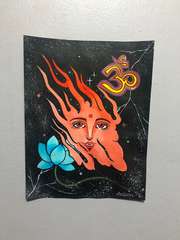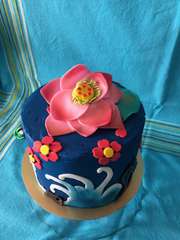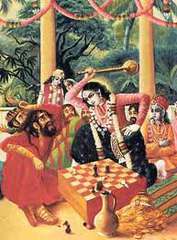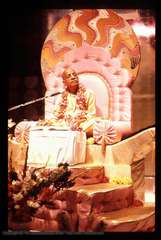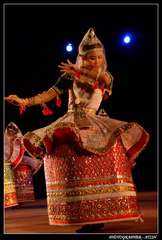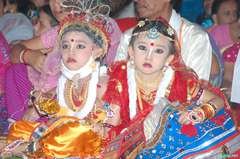Hare Kirshna Gurudev, AGTSSGN AGTSP PAMHO!!
I've some good things to tell you and questions too. FMP is very helpful in keeping the fire burning in desolation's times. Thank you very much for your dedication and determination to the Sri Caitanya Mahaprabhu movement.
HpS - Srila Prabhupada, Vaisnava Bh. Vrnda, Ki Jai!
I taught some cooking classes and distributed some books during this quarantine time. I've painted a lot, participated in Judo meetings, even some International ones, where my Sensei introduce me as a member of Hare Krishna movement and we talk about the activities that we have done in the dojo, The Prasada is always a good way to open many doors.
ASA - !! 'o' !!
(I've considered taking second initiation, but it's an idea for now)
I've a new project, I'm making decorated cakes. I really like it because i can mix many things that I like: Cook, Design & Distribute Prasada.
ASA - Our friends for many years, Maha-bhagavata Dasi and Kestrajna Das, had a catering business for Wedding, Birthday... Cakes. They would be a meter tall and weigh over 100KG. It was a whole science of strcutural engineering, decoration, PRASADAM distribution. She had moer orders that she could satisfy! Her Deitys were quite robust!
A few days ago, in an afternoon class, you read a interesting text, The Sri Vrindavana Mahimamrita. This made me think of somethings taht worries me a lot, when you was change the word Vrindavana to Iskcon, I thought about the situations that arise where some people attack Iskcon, its representative members and how that affects us, affects me.
The next day in NOD reading, there was a point that said that we should be intolerant of Krishna's offenders or of His pure devotees. This is happening now and not by atheist or impersonalist, the members of the movement, themselves sometimes offending to Srila Prabhupada.
So, You know me, i try hard to control my character and I've tolerated very strong situation, because they were against me, but what can I do when someone offends to Srila Prabhupada and his work, when I keep the distance and I avoid confrontation, but the offences are recurring. What should I do?.
HpS - Is a very important question. We have discussed it pretty often before. We traveled on the Vraja-mandala Parikrama for many hears with Lokanatha Swami and up to 600-devotees! Walk barefoot in the sand and thorns of Braja. Sleep on the hard ground in tents with 100 other coughing, snooring, devotees.... Pressure was intense, but we got a Mantra out of it: In Vrndavana only Krsna and Balarama kill demons.
If you see demons in ISKCON you can always chant "Hare Krsna! Hare Rama", "Oh Radha, please call Krsna and Rama to deal with these demons".
They will kill the demons, with great artistry, or ... or... They will empower us to use verbal, mental or physical violence, and it will be applied with such expertise, like a surgeon with a knife, that afterwards there won't be a bad tast for anybody.
It will be obvious that They are sending the thoughts, words, physical moves.
I hope your health is maintained well, we have a lot of service to do for Prabhupada and Iskcon. Grateful for your time, Your eternal servant
Parasurama Avatar Das, Santiago Chile.
HpS - Thank you!!!
Deal with the problems at an institutional level, amongst friends, with direct experience of seving Srila Prabvhupada.

